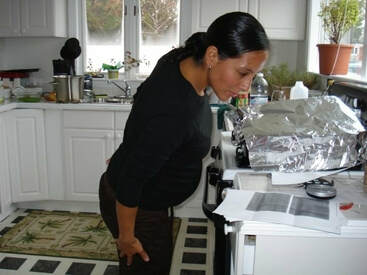|
Mom's Want Answers. Here's 3 Things to Keep in Mind With Regards to DRA I am a science minded practitioner, I could spend the better part of a day going down a rabbit hole of investigating new science related to a myriad of topics I love. DRA (diastasis recti abdominus) is one of those topics. DRA is a thinning of the central abdominal tissue that can occur with pregnancy. Mom’s often worry because they feel that they look pregnant after baby is born. Some moms experience back pain, urinary incontinence or feelings of vaginal heaviness as well. It is something many moms are concerned with these days. There are a ton of programs to prevent and eliminate DRA. Let’s be real for a second. There is not enough science to have exact answers or guidelines for every type of client that walks into my office. There isn't a hidden answer that fits all moms. I just completed a Women’s Health 8 day 2 hour/day Webinar series and I would love to share with my community of amazing moms some current thoughts about the topic of DRA.
As of right now there are a limited number of studies that examine DRA recovery and even it’s clinical significance with regards to long term function. Some studies look at DRA and apply treatment principles but fail to examine how the severity of the DRA impacts treatment outcomes. So, for example how does a large DRA respond to exercise vs a small DRA. How about the make up of the woman’s collagen? Some of us get wrinkles earlier in life and some older. Some got stretch marks during pregnancy that went away and some still have them. Our collagen make up dictates much about our post natal recovery with respect to DRA. In addition, bowel dysfunction can add pressure to the abdominal system that impedes the ability of proper breath to be strong enough to overcome the outward pressure of gas and bowels. DRA does not happen overnight. It takes a long period of sustained abdominal pressure for a DRA to form. Men and even kids can have it too! Bottom Line: There is not one program or one exercise that will help all people with DRA or prevent DRA with 100% assurance. So what’s a mom to do? Number 1: Whether you have DRA or not, I cannot recommend enough getting a postnatal breathing and movement assessment. Proper breathing mobilizes your spine and organs! It also allows for optimal pressure management of your core for stability and organ health. When you learn about your specific breath pattern you can then best incorporate new strategies to optimize restful breathing so it works for you. Number 2: Learning how to exercise properly for your body is critical! If you have signs of doming (popping out of your belly) during exercise classes, post exercise back pain or vaginal heaviness, maybe you need a modification or two to participate in class best. Maybe that means you need to revisit how you lift, breath and function during basic daily activities because let’s face it- just being a mom is a workout! To activate a system that creates good tension throughout the front of your belly and around the thorax is critical for lifelong abdominal health. Number 3: Remember- there is not one magical cure. We need to relax and understand that as much as we would like, there isn’t a one answer fits all block that can help you in the same way it helped your best friend. We need to recall that DRA doesn’t occur overnight so it won’t go a way overnight. Proper assessment and understanding how your body is currently functioning and how to best promote proper function is key! Recovering from birth is not an event that occurs at 6 weeks, it is a process. Since May is Mother's Day I am offering 15% off of first visits! call today! 9783933736
0 Comments
Leave a Reply. |
CONTACT
|


 RSS Feed
RSS Feed
